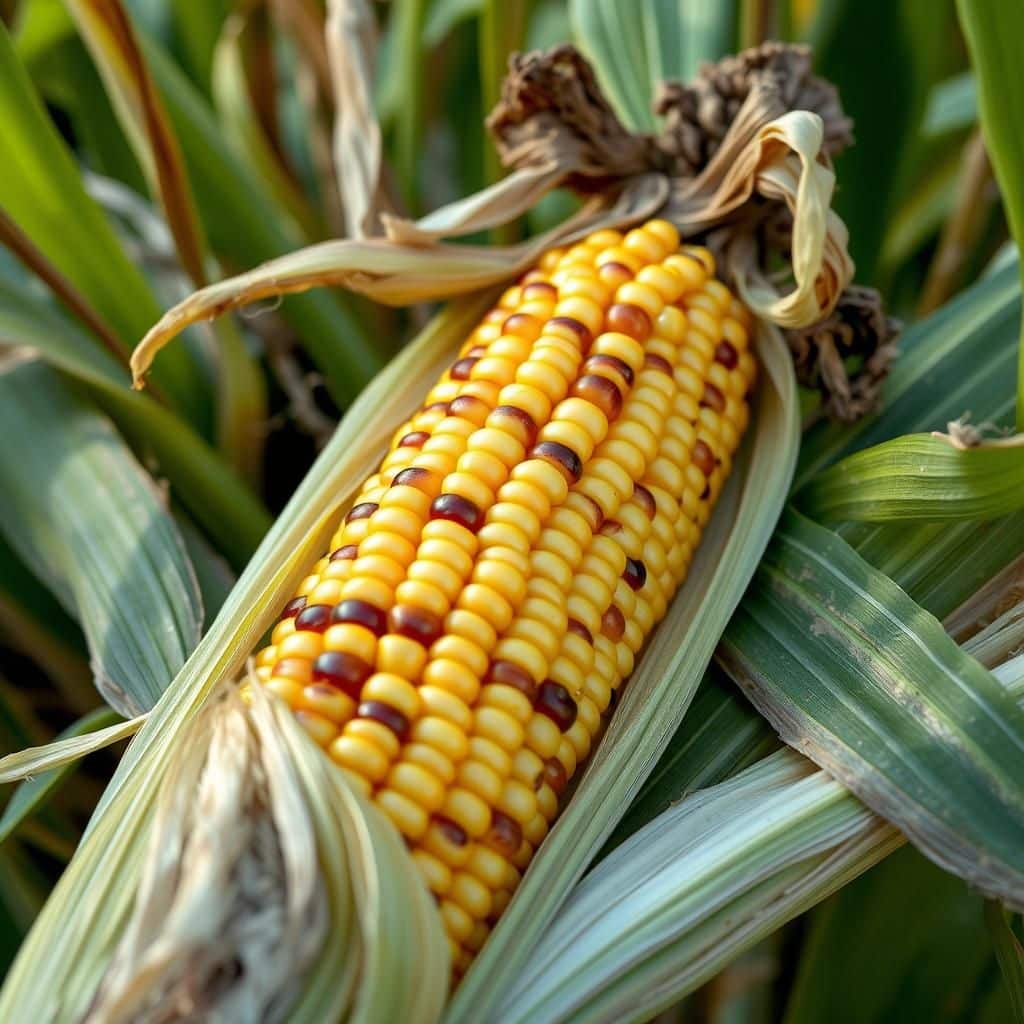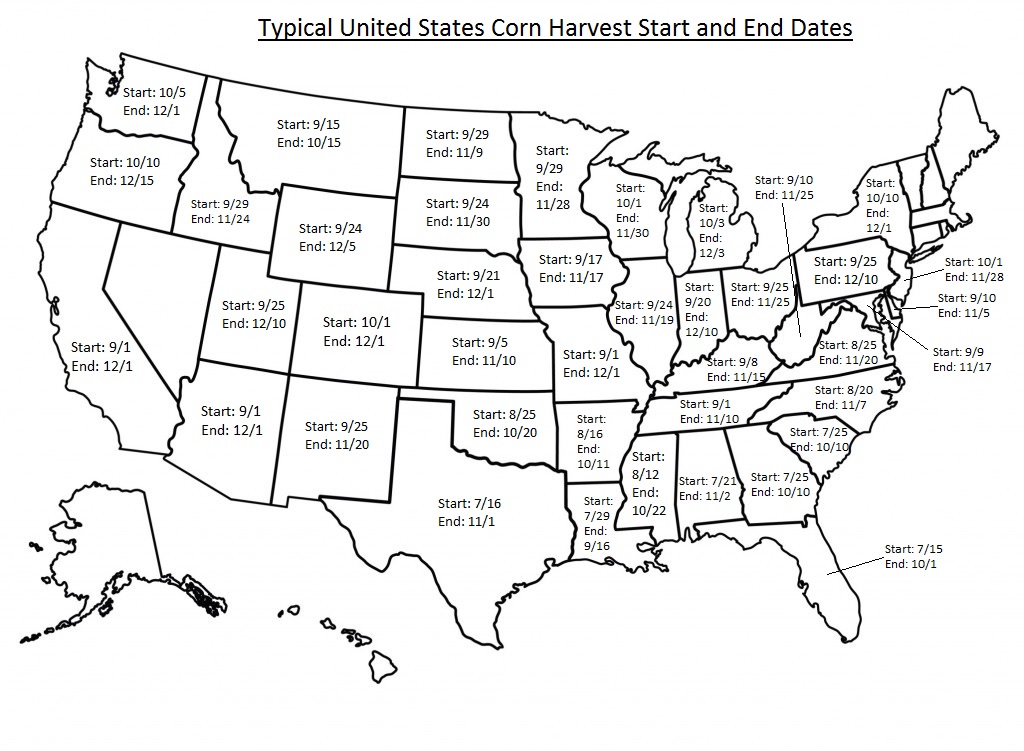When is Corn Ready to Be Picked? A Complete Guide to Timing Your Harvest

Harvesting corn at the right time is crucial for ensuring optimal flavor, texture, and yield. Knowing when corn is ready for picking can be a challenging task, as various factors such as corn type, weather conditions, and growing practices all play a role. This complete guide will help you understand the signs of readiness, the ideal timing for harvesting different varieties, and tips to maximize your harvest. Whether you’re a seasoned farmer or a backyard gardener, mastering the art of timing can lead to a more bountiful and delicious corn crop. Get ready to delve into the essentials of corn harvesting.
Signs That Corn is Ready to Be Picked
When determining the right time to harvest corn, it's essential to observe a few key indicators. The kernels should feel firm and plump when pressed, and the husks should be dry and brown. A reliable method is to check the silks, which should turn brown and start to dry out, indicating that the ears are mature. Additionally, the milk stage of the kernels, where a small amount of milky fluid escapes when punctured, is a clear sign that the corn is nearing its peak ripeness. Timing is crucial to ensure maximum sweetness and flavor; harvesting too early can result in starchy, less palatable corn, while waiting too long may lead to toughness and a decrease in sweetness.
Kernel Firmness
The firmness of the kernels is a critical factor to assess the ripeness of corn. Kernels should be firm to the touch and filled out completely to their fullest size, indicating that they have reached their full development. If you press on a kernel and it feels mushy or doesn't release a milky substance, it's likely not yet ready for harvest.
Silk Conditions
Checking the condition of the silks is another sign of corn readiness. As the corn matures, the silks start to brown and dry out, which is a good indicator that the ears of corn are ready to be picked. Fewer green silks suggest that the corn is nearing its harvesting stage.
Husk Appearance
The appearance of the husk can reveal important information regarding the maturity of the corn. An ideal husk should be dry, thick, and brown, indicating that the corn within is ready for harvesting. If the husk remains green and moist, it's a sign that the corn requires more time to mature.
Ear Size
The size of the ears themselves is another measurement to consider. Generally, they should be large and filled out, ideally measuring around 6 to 8 inches long for most varieties. When the ears appear full and rounded, it often indicates that the corn is at its peak.
Harvest Timing
Harvesting corn at the right time is crucial for flavor and texture. Ideal conditions for harvesting usually occur 18 to 24 days after the silks begin to emerge. Timing can vary based on variety and growing conditions, but regularly checking the factors above will help ensure optimal harvest time.
| Indicator | Details |
|---|---|
| Kernel Firmness | Kernels should be firm and plump. |
| Silk Conditions | Silks should be brown and dry. |
| Husk Appearance | Husk should be dry and brown. |
| Ear Size | Ears should be large and full. |
| Harvest Timing | Typically 18 to 24 days after silk emergence. |
What month is corn usually picked?


Corn is usually picked in late summer to early fall, primarily in the months of September and October in the United States. The timing of harvest can depend on several factors, including the variety of corn, local climate conditions, and farming practices. Sweet corn, for instance, is typically harvested earlier in the season, while field corn, which is used for animal feed and industrial products, is generally harvested later.
Factors Influencing Corn Harvest Timing
The timing of corn harvest is influenced by various factors that can affect the growth cycle of the plant. These include:
- Climate Conditions: Weather patterns such as temperature and rainfall can significantly impact when corn reaches maturity.
- Soil Type: Different soil types can affect the rate of growth, influencing harvest time.
- Crop Variety: Different strains of corn mature at different rates, affecting the overall harvest schedule.
Regional Differences in Corn Harvest
The month of corn harvest can vary significantly depending on the region due to climatic and agricultural practices:
- Midwestern United States: In states like Iowa and Illinois, corn is typically harvested from late September through October.
- Southeastern United States: In warmer climates, corn may be harvested as early as August.
- Western United States: Regions like California may have different varieties that can affect harvest times throughout the season.
Harvesting Techniques
The methods utilized for harvesting corn can also play a role in when and how it is picked:
- Mechanical Harvesting: Most commercial corn is harvested using combines, which can speed up the process.
- Manual Harvesting: In smaller farms or specific sectors like sweet corn, manual harvesting is still practiced.
- Timing for Optimal Yield: Farmers often monitor moisture levels in kernels to decide the best time for harvest to maximize yield.
Post-Harvest Considerations
After corn is harvested, several important processes are undertaken that are crucial for maintaining quality:
- Drying: Corn may need to be dried to a specific moisture level to prevent spoilage.
- Storage: Proper storage facilities help in maintaining the quality and preventing pest infestations.
- Transportation: Planning for transportation logistics is essential to move harvested corn to processing or storage facilities efficiently.
Impact of Early and Late Harvesting
The timing of corn harvesting can have significant implications for both yield and quality:
- Early Harvesting: Corn harvested too early may not yield optimally or may have lower sugar levels in sweet corn.
- Late Harvesting: Delaying harvest can lead to over-maturity, resulting in damaged kernels or increased susceptibility to disease.
- Balancing Harvest Time: Finding the optimal harvest time is crucial for maximizing both yield and quality of the crop.
Can corn be picked too early?

Yes, corn can definitely be picked too early. The timing of corn harvest is crucial as it directly affects the quality, taste, and yield of the corn. Corn is typically harvested when the kernels have reached their full potential. If harvested too early, the corn may not have developed the necessary sugars and nutrients, making it less flavorful and enjoyable.
See also:
When corn is picked prematurely, it often means that the kernels are not fully formed and can result in a product that is tough and starchy rather than sweet and tender. This can be particularly detrimental for those growing corn for the market or personal consumption.
Indicators of Ripeness
To determine if corn is ready to be harvested, there are several indicators to consider:
- Silk Color: The silks should be brown and dry.
- Kernel Appearance: The kernels should be plump and fully formed.
- Husk Condition: The husks should be green and tightly wrapped around the ear.
Consequences of Early Harvesting
Picking corn too early can have several negative consequences:
- Poor Flavor: The corn may taste bland or starchy.
- Texture Issues: It can be tough and less tender.
- Reduced Nutritional Value: Nutrients may not be fully developed.
Timing for Optimal Harvest
The optimal time to harvest corn is typically around 20 days after the silks turn brown. Here are some timing tips:
- Check the Calendar: Most varieties reach maturity between 60 to 100 days after planting.
- Conduct a Squeeze Test: The kernels should release a milky liquid when squeezed.
- Observe Weather Patterns: Ideal conditions can influence when to harvest.
Storage and Preservation Tips
Once corn is harvested at the right time, proper storage is essential to maintain its quality. Consider these tips:
- Keep It Cool: Store corn in a cool place or refrigerate it.
- Avoid Moisture: Keep it dry to prevent spoilage.
- Use Quickly: It’s best consumed within a few days of harvesting for optimal flavor.
Varieties of Corn and Their Harvesting Times
Different varieties of corn have distinct characteristics that affect when they should be harvested:
- Sweet Corn: Typically harvested when the kernels are milky.
- Field Corn: Usually left to mature longer for animal feed or processing.
- Ornamental Corn: Harvested later for decorative purposes.
Questions from Our Readers
When is corn ready to be picked?
Corn is generally ready to be picked when the kernels are plump and the silks (the threads that emerge from the ears) have turned brown and dry. Additionally, if you gently squeeze a kernel and it releases a milky fluid, it's a sign that the corn is at its peak ripeness.
How can I tell if sweet corn is ripe?
To determine if sweet corn is ripe, check if the ears are filled out to the tip and the silks are moist and brown. The ideal time to harvest is when the kernels are firm and emit a milky substance when punctured, indicating they have reached their maximum sweetness.
See also:
What color should the corn silk be when ready to harvest?
When the corn is ready to harvest, the silk should be a dark brown or black color and may start to dry out. This change in color signifies that the kernels have matured and are optimal for picking.
Can corn be harvested too early?
Yes, corn can definitely be harvested too early. If harvested before the kernels are fully developed, they will be tough, starchy, and lack the sweet flavor that comes from allowing them to reach full maturity. Aim for that perfect balance of plumpness and sweetness for the best eating experience.

If you want to read more articles like When is Corn Ready to Be Picked? A Complete Guide to Timing Your Harvest, we recommend you check out our Seeds category.
Leave a Reply
Related Articles